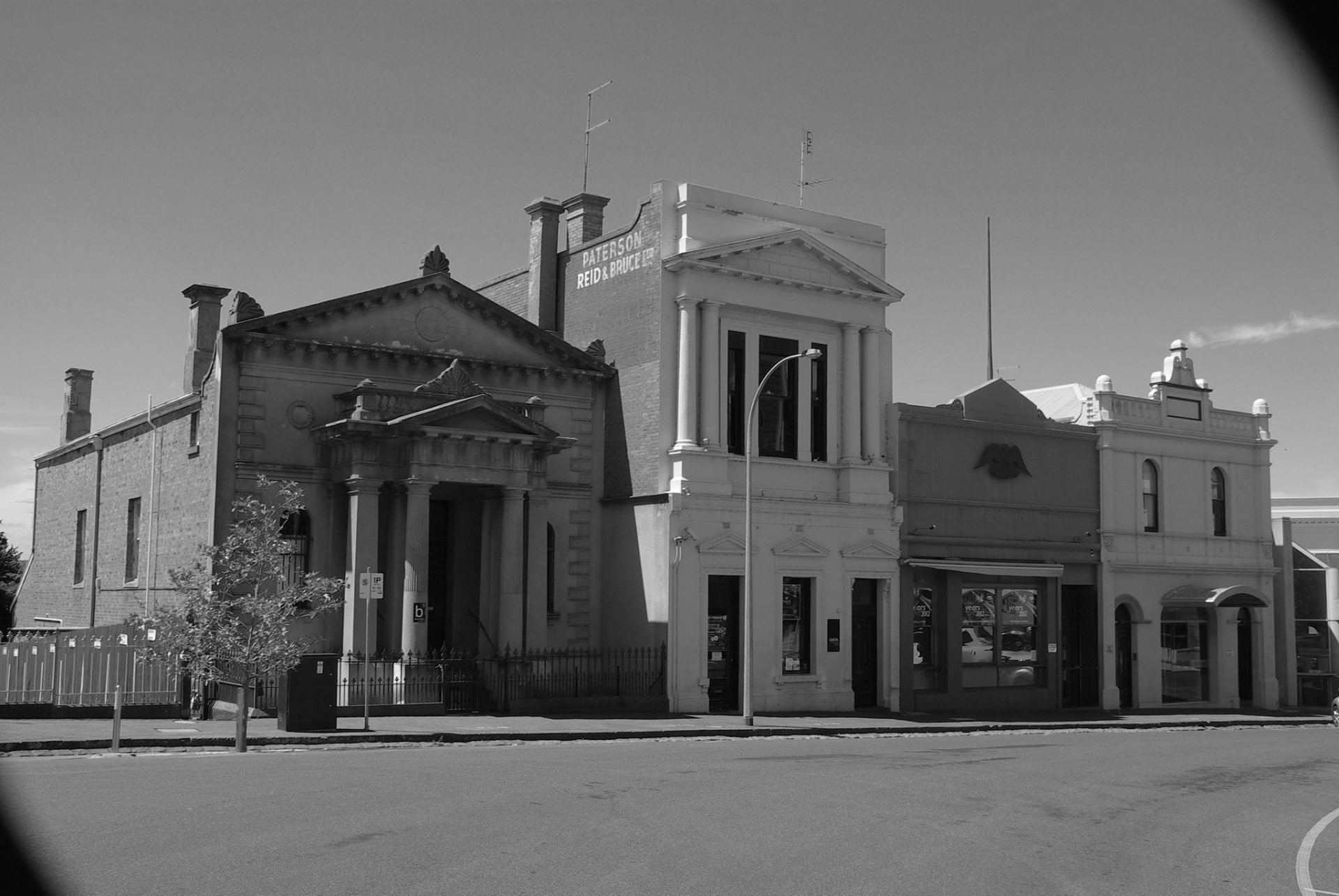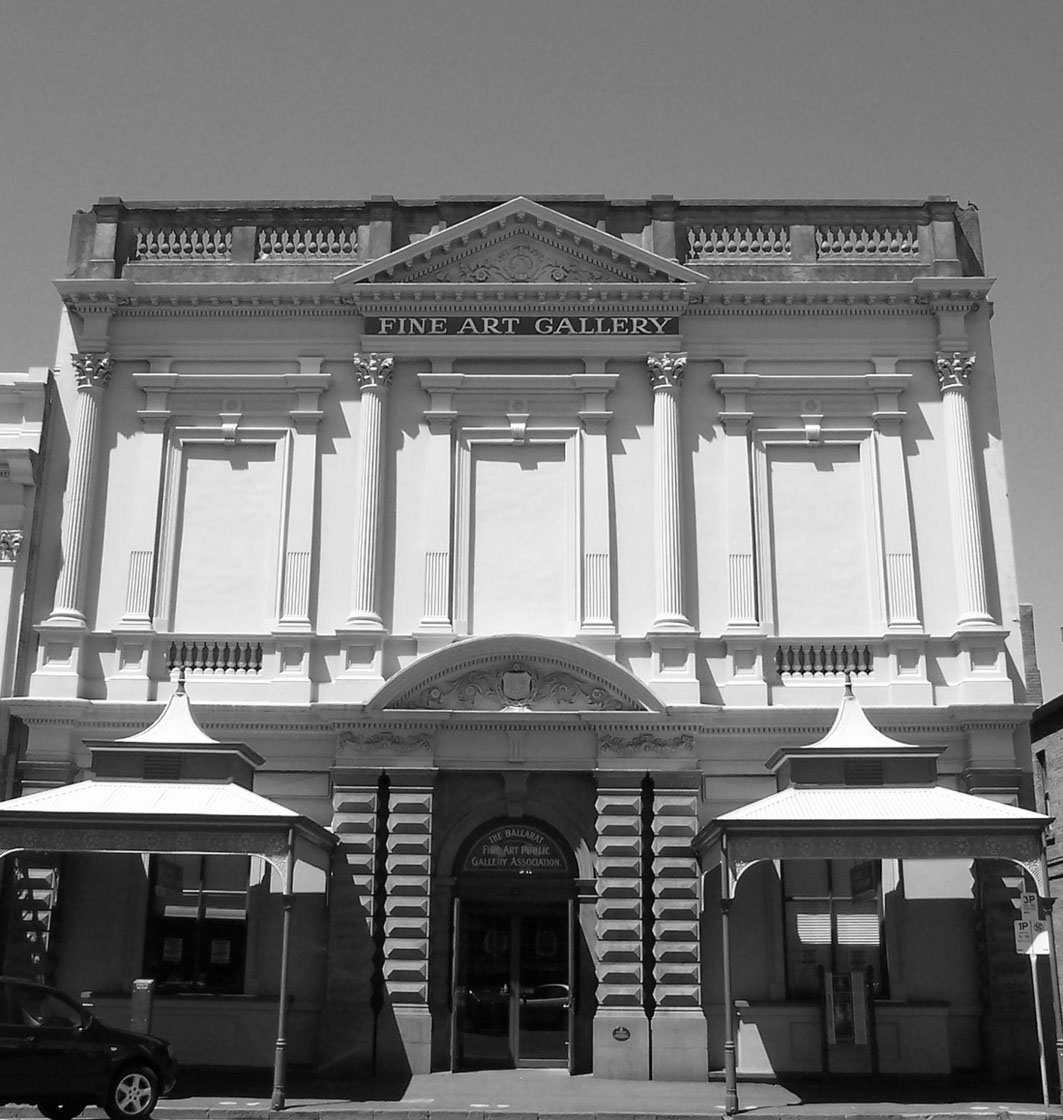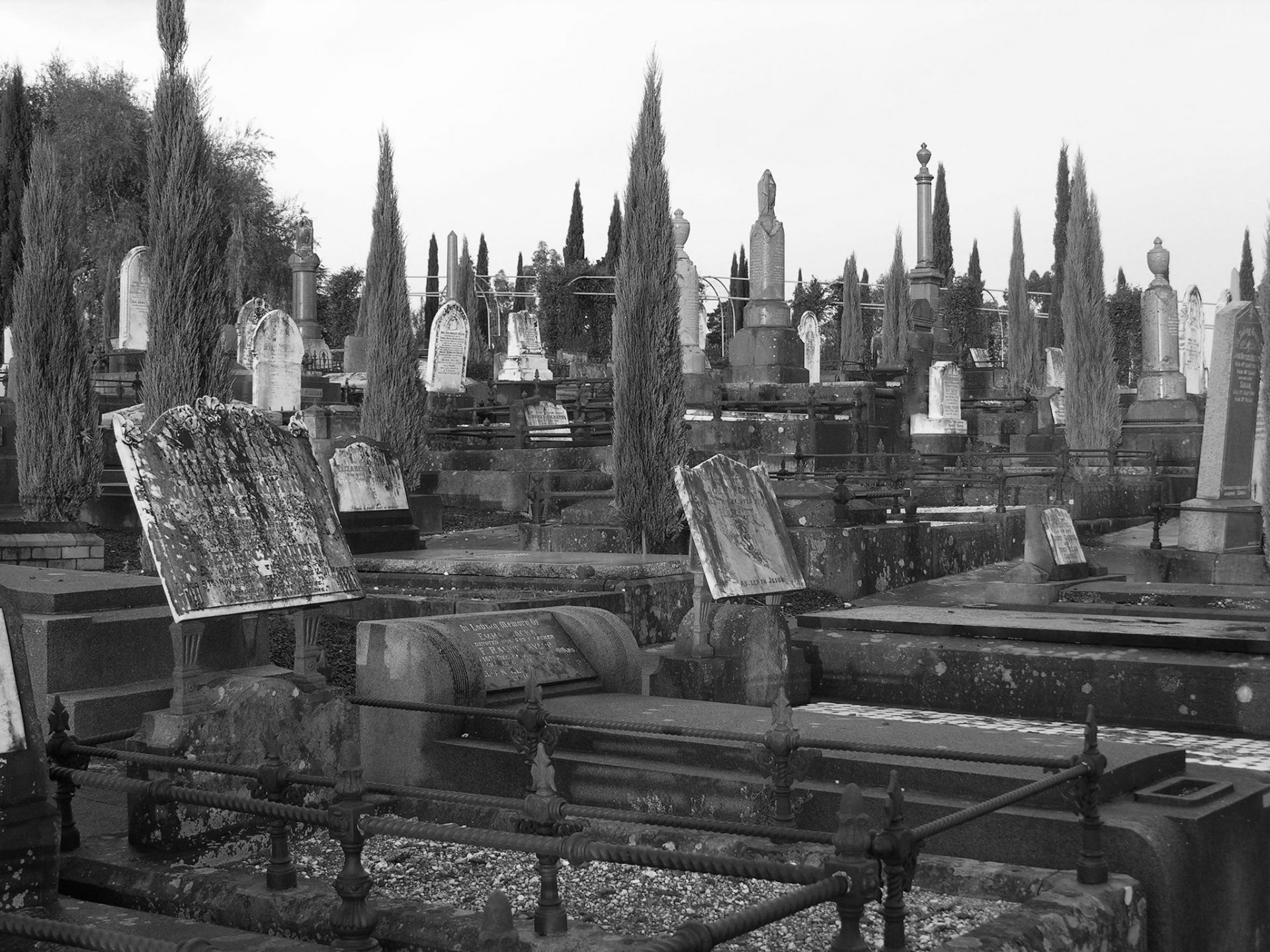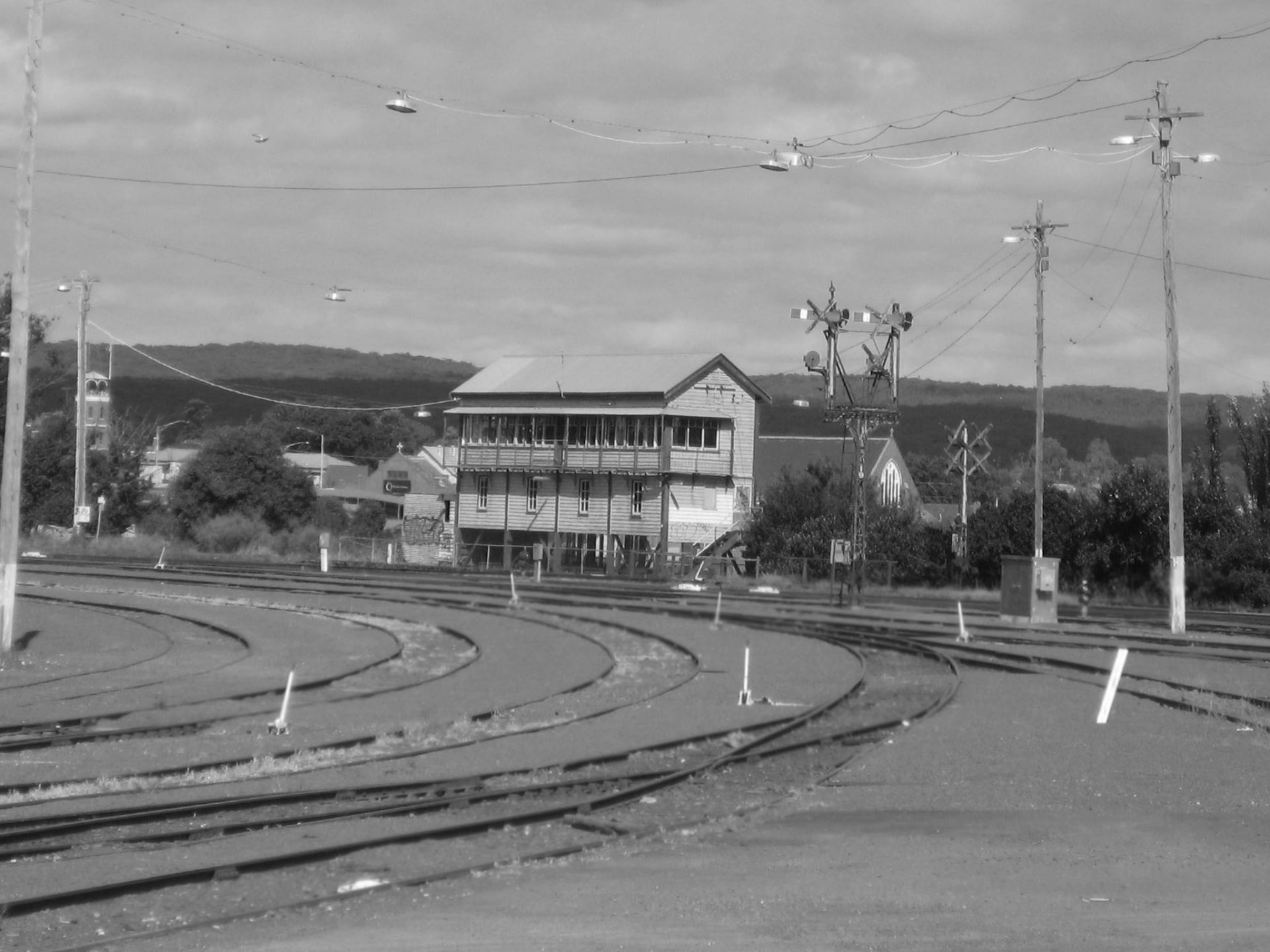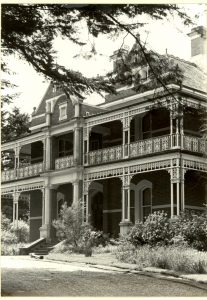KILLARNEY: LOUGHLIN’S HOME
Dorothy Wickham
 The beautiful bluestone mansion called Killarney that nestles in a tranquil pastoral setting near Mount Warrenheip was built and owned by Thomas Loughlin from money bequeathed from his uncle Martin Loughlin whose obituary in the Otago Daily Times of 13 October 1894 measured the wealth he had gained by becoming a mining magnate, speculator and entrepreneur. It showed that he left property valued at around a quarter of a million pounds. It comprised the Glengower estate of 18,000 acres, a large interest in the Seven Hills estate Kingston, and in Queensland station property, mortgages of land and station property, Melbourne Tramway, bank and other shares.
The beautiful bluestone mansion called Killarney that nestles in a tranquil pastoral setting near Mount Warrenheip was built and owned by Thomas Loughlin from money bequeathed from his uncle Martin Loughlin whose obituary in the Otago Daily Times of 13 October 1894 measured the wealth he had gained by becoming a mining magnate, speculator and entrepreneur. It showed that he left property valued at around a quarter of a million pounds. It comprised the Glengower estate of 18,000 acres, a large interest in the Seven Hills estate Kingston, and in Queensland station property, mortgages of land and station property, Melbourne Tramway, bank and other shares.
The beneficiaries of Martin’s Will included his brother Michael Loughlin who had come out from Ireland two months before Martin’s death from a lingering illness, to take him Home (to Ireland). This must have been impossible for he died in Ballarat. On Martin’s death, Michael, a farmer, received £5,000 immediately in a bequest, as did the Roman Catholic Bishop of Ballarat, while the Ballarat Hospital, Benevolent Asylum, and Orphanage received £500 each. Distant relatives in NSW received £2,000 and his godchildren £100 to £300 each. The remainder of his estate was to be managed for the benefit of his brother Michael, and Michael’s two sons, Michael and Thomas, who emigrated to Australia and built Killarney.
Martin was born 3 November 1833 at Castlewarren, Kilkenny County, Ireland to parents Martin and Margaret Loughlin. An adventurous boy he sailed to America, was shipwrecked on Newfoundland, then worked in New York as a baker before returning to his homeland Ireland. Seeking new adventures with his cousin Patrick Brennan, Martin Loughlin emigrated to Victoria. On landing in Geelong in 1855 they soon heard of untold discoveries of gold and sought their fortunes at Pleasant Creek (Stawell). From here they proceeded to Ballarat one of the richest goldfields the world had ever known. Patrick and Martin were endowed with good fortune, joining the Golden Gate Co-operative Co as working shareholders. By October 1856 Martin also had shares in the Alston and Weardale Co and by 1857 was a working shareholder in the Kohinoor claim on the Golden Point Lead which paid dividends of £304,460 after winning 147,570 ounces of gold from the rich deposits. The Melbourne Stock Market in June 1863 quoted £2800 each for 40 shares, so that Martin was on a lucrative roll and as a speculator he rapidly extended his company investments.
Life was not without its intricacies for Loughlin as a perusal of the two year court case (October 1874 to September 1876) with the Learmonth brothers of Ercildoun fame suggests. The syndicate with which Loughlin was involved was accused of fraud and conspiracy in connection of the purchase of the Egerton Mine for £13,500. The day the syndicate took over the mine, rich deposits of gold were found, with profits totally £320,000. The case was notorious, and the litigation ended when the defendants (Loughlin’s syndicate) won their case.
Loughlin was involved in floating six of the richest mines in the Creswick district. They produced nearly 900,000 ounces of gold paid £269,925 royalties and distributed £1,776,945 as dividends on an aggregate capital of £143,375, and, when the gold ran out, the land was sold for £50,000.
As a speculator he lost heavily during the financial crash of the 1890s.[1] A sporting man, keen on horse racing he owned Melbourne and Caulfield Cup winners. He died a bachelor at Craig’s Hotel on 22 September 1894 where he had lived for some years. [2]
The majority of his wealth fell to his brother and two nephews. The Loughlin’s left a legacy in buildings: Killarney, a two storied mansion; the O’Loughlin Memorial Church dedicated to St John the Evangelist; altar rails at St Michael’s Church, Athy and windows at St Patrick’s Cathedral Ballarat, among others.
Killarney mansion at Warrenheip is listed on the Victorian Heritage Database (B2955) as “a two story mansion with outbuildings all erected in 1895”. The house is constructed of face brickwork with stucco details and has a slate roof with terracotta ridge capping and gables. A double storey porch with Ionic on Tuscan pilasters and semi circular parapet above is centrally located with a double storey cast iron veranda facing three sides. The gate, lodge and stables are complimentary in detail.
Killarney is a rare example of a large Boom style mansion of the 1890s complete with lodge, stables, and coach house, other structures and gardens are all essentially intact. This house is probably one of the last of the great country mansions to be erected in Victoria. The Queen Anne style influences are becoming apparent in the essentially Boom style design.
Thomas Loughlin, the nephew of Martin and son of Michael, was known as Count O’Loughlin. He travelled from Ireland to Australia and back a few times, the first being when he administered his uncle’s Will and fortune. One of the terms of the Will was that funds to build a church in memory of the Loughlin family in either Australia or Ireland were to be made available. The Memorial Church of St John the Evangelist, Kilkenny, Ireland, consecrated on 28 June 1908, was built at a cost of £40,000. Pope Pius X then conferred the title of the Knight of St Gregory the Great on Thomas, so that he was known as Count Thomas O’Loughlin.
Thomas returned to Australia then back to Ireland where he met his future wife Kathleen (Kitty) Murphy of Ballybur. Married in 1911 in Kilkenny, Ireland, Kathleen and Thomas produced five daughters, returning to Australia to live on the vast O’Loughlin estate. The Ronan and Connaughton families came out from Ireland to work the estate. Thomas also employed Len Eggleton, a labourer and gardener, and a coloured man as a coachman. Louise Eggleton also worked on the property before leaving to work for Michael O’Donoghue at Mount Warrenheip.[2]
At just 44 years of age on 1 August 1925 Kathleen died giving birth to their only son. Count Thomas O’Loughlin, aged 63 years, died four years after his wife passed away. Michael continued to run the family farm in Ireland and his grandchildren still maintain it. Thomas and Kathleen’s youngest daughter was still alive at 100 years of age on the occasion of the centenary of the O’Loughlin Memorial Church in Kilkenny.
*** Please Note: New information has exposed some inaccuracies in previous documents. This article is in the process of being researched and rewritten by Dr Michael Taffe and Dr Dorothy Wickham
[1] Ballarat Star, 27 September 1894.
[2] Austin McCallum, ADB, Volume 5, MUP, 1974, pp. 103-104.

